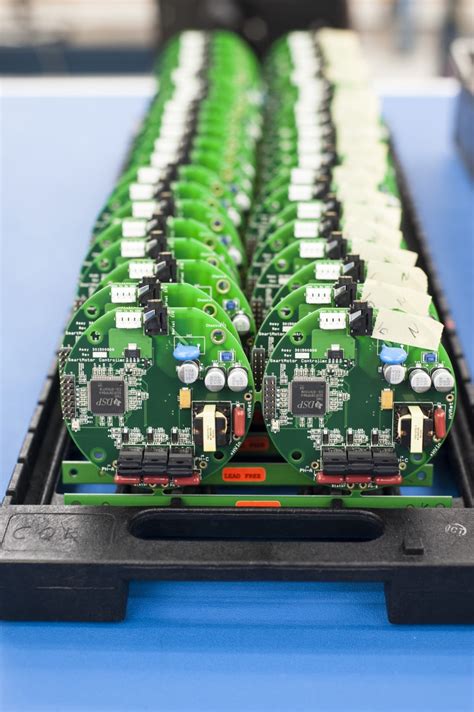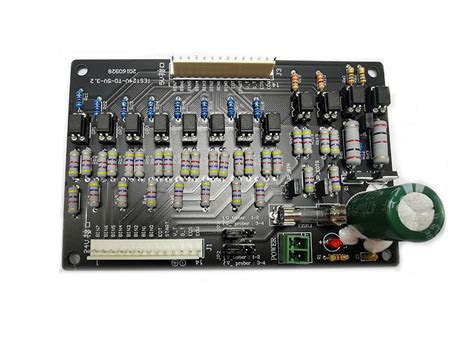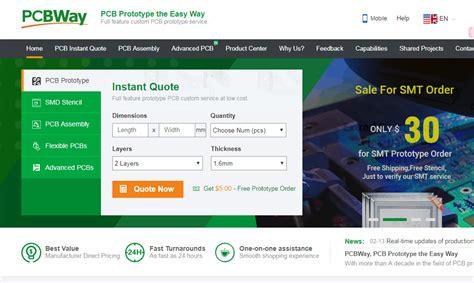Revolutionizing Electronics: Custom PCB Printing and Assembly Solutions
Key Takeaways
Custom PCB assembly and printing technologies are fundamentally changing the landscape of the electronics industry. By leveraging these specialized processes, manufacturers can achieve unparalleled levels of design flexibility, enabling them to create tailored solutions that meet specific project requirements. This adaptability not only enhances product functionality but also caters to a diverse range of consumer needs, significantly broadening market appeal. Furthermore, the integration of advanced pcba methods has led to substantial reductions in production costs, streamlining the entire manufacturing workflow and making it more efficient. The innovative materials and processes used in custom PCB printing allow for faster turnaround times, ensuring that products reach the market more promptly than ever before. As companies adopt these cutting-edge solutions, they position themselves to gain a competitive edge, fostering expansion and growth in an increasingly digital world. Overall, embracing custom PCBs is not just a trend; it is an essential strategy for companies striving for excellence in an ever-evolving technological landscape.
Introduction to Custom PCB Printing and Assembly
The field of electronics is ever-evolving, and at the forefront of this transformation is custom PCB printing and assembly. This innovative approach allows businesses to create tailored printed circuit boards (PCBs) that align with specific technical requirements, enhancing overall design flexibility. Gone are the days when manufacturers had to settle for standardized products; now, the emphasis is on pcb assembly techniques that cater to unique project needs.
By leveraging modern technologies in pcba, companies can not only optimize their designs but also significantly reduce production costs. With the ability to customize each aspect of a board, from size and shape to material selection, organizations gain a competitive edge in bringing their products to market more swiftly. The process of PCB assembly itself has become more streamlined, enabling faster turnaround times without compromising quality.
Understanding the various printing technologies available is crucial for businesses aiming to maximize efficiency within this sphere. For instance, advancements in additive manufacturing have allowed for intricate designs with minimal material waste. As we delve deeper into this guide, expect insights into how these techniques can revolutionize processes and lead to impactful results.
“Embracing custom solutions not only enhances product performance but also opens doors to innovation.”
As we continue exploring the nuances of custom PCB printing and assembly, it becomes clear that these capabilities are not just advantageous; they are essential for any business looking to stay relevant in today’s competitive electronics landscape.
Benefits of Custom PCB Solutions in Electronics
Custom PCB solutions offer a plethora of benefits that are reshaping the landscape of the electronics industry. At the forefront, pcb assembly techniques enhance design flexibility, allowing engineers to innovate without the constraints often associated with standard board options. This flexibility enables the integration of advanced components and layouts tailored to specific project requirements, optimizing both functionality and performance. Moreover, utilizing custom pcba not only streamlines the production process but also results in significant cost reductions. By minimizing material waste and optimizing manufacturing time, businesses can see an improvement in their overall margin while delivering high-quality products faster. Additionally, as technology advances, companies can capitalize on rapid prototyping enabled by custom PCB printing methods which accelerate the product development cycle. This agile approach not only empowers businesses to respond swiftly to market demands but also positions them for a competitive edge in an ever-evolving landscape. Overall, embracing custom pcb assembly solutions opens up new avenues for innovation, efficiency, and market responsiveness that are crucial for sustained growth in today’s electronic manufacturing arena.
The Evolution of PCB Design and Manufacturing
The landscape of PCB design and manufacturing has undergone significant changes over the past few decades, largely fueled by advancements in technology and increasing demand for customized electronics. Initially, the process was largely analog, utilizing manual techniques that constrained complex designs and scalability. Today, thanks to innovations such as automated PCB assembly and sophisticated design software, engineers can create intricate layouts that were previously unimaginable. As a result, the introduction of custom PCB printing has allowed for unparalleled flexibility in designs, enabling businesses to tailor their products according to specific needs. This evolution has not only enhanced the aesthetic appeal of electronic devices but also improved functionality by optimizing space and component placement. The impact of these advancements extends to PCBA (printed circuit board assembly), where automated systems have streamlined operations, significantly reducing production time while minimizing human error. Thus, the transition from traditional methods to modern practices in PCB design and manufacturing illustrates a pivotal shift towards efficiency and innovation, marking a new era in the electronics industry.
Overview of Printing Technologies for PCBs
The landscape of custom PCB printing has evolved significantly, driven by the need for higher precision and efficiency in electronics manufacturing. There are several printing technologies available, each suited to different applications and production volumes. Screen printing, for instance, remains a popular choice for many manufacturers due to its ability to apply thick layers of conductive materials efficiently. On the other hand, inkjet printing has gained traction thanks to its capability to handle complex designs with high resolution. This method allows for faster prototyping and design changes, ultimately benefiting the PCB assembly process. Additionally, techniques such as laser direct imaging (LDI) provide unparalleled accuracy in pattern transfer, ensuring that even the most intricate designs can be reproduced with fidelity. As a result, these advancements not only transform traditional methods of PCB manufacturing but also enhance the overall pcba workflow by minimizing errors and reducing lead times. Understanding these technologies is crucial for businesses looking to leverage custom PCB solutions that can adapt quickly to customer demands while maintaining cost-effectiveness and quality.
Streamlining Production: Assembly Process Insights
The pcb assembly process is a critical aspect of the electronics manufacturing industry, significantly impacting both efficiency and quality. In today’s fast-paced environment, companies are turning to advanced pcba techniques to streamline their operations. The use of automated assembly lines, combined with precision machinery, reduces human error and accelerates production timelines. Moreover, these technologies allow for greater adaptability in assembly methods, accommodating various PCB designs without the need for extensive retooling. This flexibility means that manufacturers can better meet the changing demands of the market while also reducing production costs significantly. By incorporating innovative solutions such as surface mount technology (SMT) and through-hole assembly methods into their processes, businesses are not only enhancing their operational efficiency but also improving the overall quality of their products. As firms invest in better training for their workforce and leverage digital tools for real-time production monitoring, the benefits of an optimized pcb assembly process become increasingly evident—leading to faster time-to-market and greater customer satisfaction.
Cost-Effectiveness of Custom PCBs for Businesses
The cost-effectiveness of custom PCBs plays a pivotal role in modern business strategies, particularly within technology-focused sectors. By utilizing custom PCB assembly solutions, companies can achieve significant savings throughout the production lifecycle. The tailored nature of these pcba services allows businesses to optimize their designs efficiently, reducing material waste and unnecessary features that may not contribute to functionality. Custom PCBs are often produced in smaller batches, which lowers upfront capital expenditures and creates financial flexibility. The ability to quickly iterate designs and pivot based on market demands also accelerates the time-to-market, enabling businesses to respond faster than competitors using traditional manufacturing routes. Furthermore, by investing in custom solutions, companies can reduce their reliance on off-the-shelf components, which may come with high markups or lead times that hinder project momentum. In essence, adopting custom PCB printing and assembly not only provides immediate financial advantages but also fosters long-term sustainability and growth within the rapidly evolving electronics landscape.
Future Trends in PCB Printing and Assembly
The landscape of custom PCB printing and assembly is evolving rapidly as technological advancements reshape traditional manufacturing paradigms. One of the most significant trends is the adoption of additive manufacturing techniques, which are transforming how printed circuit boards (PCBs) are constructed. These methods enable the creation of intricate designs that were previously unattainable, allowing for increased miniaturization and complexity in products. Another noteworthy trend is the integration of smart technologies into pcb assembly processes. Automation and artificial intelligence are streamlining production lines, enhancing efficiency, and reducing the likelihood of human error during pcba. Furthermore, as sustainability becomes a growing concern, manufacturers are exploring eco-friendly materials and processes to minimize waste during production. Notably, the demand for quick turnaround times in pcba production is driving the exploration of rapid prototyping solutions that allow companies to swiftly test and implement their designs. These trends illustrate a significant shift toward smarter, more sustainable practices that not only improve performance but also keep pace with the fast-evolving electronics market. As these innovations continue to unfold, they will undoubtedly set new standards for excellence within the PCB assembly industry.
Case Studies: Successful Implementations in the Industry
The implementation of custom PCB printing and assembly solutions has yielded substantial benefits across various sectors. For instance, a leading automotive manufacturer recently adopted advanced pcb assembly techniques to optimize their electronic components’ performance. By integrating cutting-edge technologies into the PCBA process, they observed a remarkable 30% reduction in production costs and significant enhancements in design flexibility. This case exemplifies how embracing innovative pcb assembly strategies can streamline operations while maintaining high-quality standards.
Similarly, a prominent consumer electronics firm leveraged custom PCB solutions to shorten their product development cycle dramatically. This allowed them to bring their new products to market rapidly, securing a competitive edge in a fast-paced industry. The successful use of custom PCB printing enabled this company to explore unique designs that were previously unattainable with traditional manufacturing methods, ultimately leading to increased customer satisfaction.
Furthermore, an emerging tech startup utilized flexible PCBA practices to create prototypes that could be modified in real-time based on ongoing feedback from users. This adaptability not only accelerated their development process but also facilitated a user-centered design approach that aligned closely with market demands. These case studies highlight the transformative impact of custom PCB solutions and underscore their relevance in today’s evolving electronics landscape, as companies continue to seek innovative methods for enhancing productivity and efficiency.
Conclusion
In the rapidly evolving landscape of electronics, custom PCB printing and assembly are becoming pivotal solutions that resonate with the needs of modern manufacturers and product designers. The meticulous process involved in pcb assembly, often referred to as PCBA, allows for a high degree of customization, enabling designers to create tailored solutions that fit specific application requirements. This flexibility has not only enhanced innovation but also facilitated a significant reduction in time-to-market for new electronic devices. Furthermore, the integration of advanced technologies in custom PCB production has resulted in lower production costs without compromising quality. As businesses increasingly seek to differentiate their offerings in a competitive market, the emphasis on efficient pcb assembly processes will be paramount. By leveraging these advanced custom PCB solutions, companies are well-positioned to meet customer demands while maintaining operational efficiency. The road ahead promises exciting developments as we continue to harness the potential of innovative PCB printing and assembly technologies for future applications.
FAQs
What is PCB assembly?
PCB assembly, often referred to as PCBA, is the process of soldering electronic components onto a printed circuit board (PCB) to create a functional electronic device.
How does custom PCB printing benefit design flexibility?
With custom PCB printing, designers can manipulate the layout and specifications of PCBs to meet specific project requirements, allowing for creative and innovative designs that better fit their applications.
What are the common challenges in PCB assembly?
Some common challenges in pcb assembly include ensuring component placement accuracy, managing thermal profiles during soldering, and maintaining high levels of quality control throughout the production process.
How can costs be reduced in PCB production?
Custom pcb solutions often lead to reduced costs by minimizing material waste, optimizing production runs, and leveraging economies of scale through efficient manufacturing processes.
What technologies are used for custom PCB printing?
Various technologies such as inkjet, screen printing, and laser etching are employed for custom pcb printing, each offering unique advantages depending on the specific needs of the project.
What factors should be considered when choosing a PCB assembly partner?
Considerations include quality assurance practices, manufacturing capabilities, turnaround times, and overall experience in handling complex assemblies. Look for partners who are adaptable to changing requirements.







